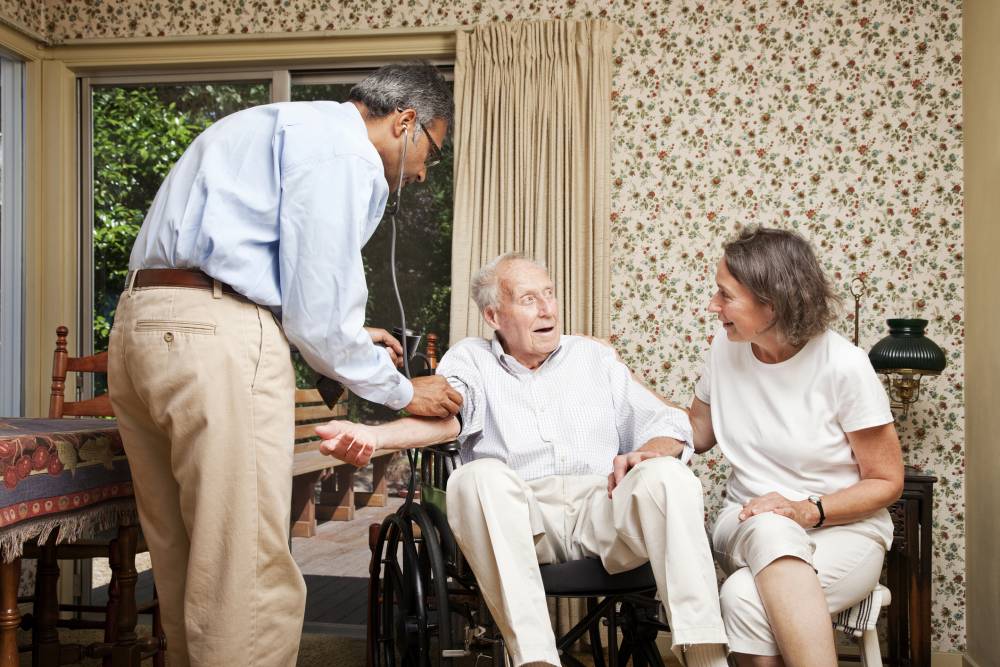
It is important to note the contextual statistics that are at play when discussing matters of aged care, reform and an exodus of doctors from the sector.
In light of the statistical facts, the issues and pressures on the aged care sector are only going to grow.
There is no other way to read the facts. A sector whose medical professionals are stretched to breaking point wants to be heard.
By 2056, 22% of the Australian population will be aged 65+, a figure of 8.7 million people.
In 2009-2010, around 53% of aged care facility residents were living with dementia, that percentage is projected to grow, with estimates of 1.1 million residents living with the condition by 2056.
Of the members linked to the Australia Medical Association (AMA), over 600 responded to the recent survey and there response is telling of an industry in distress.
Presenting their frustration at the lack of experienced and trained nurses in aged care facilities and inadequate Medicare patient rebates, 1 in 3 doctors has stated that they will likely cut down on their hours working in aged care or stop completely within the next 2 years.
The AMA’s 2017 survey found that more than ever doctors working in aged care are making more frequent visits and having to stay longer.
Pressures on remaining doctors to work longer hours may be due to a 13.55% drop in GPs working in the sector since 2015.
The trend is of doctors leaving and it now that Australian medical policy must take note of the downward trajectory.
Doctors additionally have cited their concern at registered nurses being replaced with care attendants who do not have the necessary skills needed to deal with many of the acute medical needs of older patients.
The AMA’s president, GP Dr Tony Bartone who makes regular visits to aged care facilities has spoken into the rising level of concern and issues in the provision of medical care to older Australians.
He says, “We are making this report public because now, more than ever, we need action in aged care. Australia is facing an ageing population, with more chronic, complex medical conditions than ever before. The current aged care workforce does not have the capability, capacity, and connectedness to adequately meet the needs of older people.”
Dr. Bartone emphasises that residents in aged care facilities need timely access to medical care and practitioners, to mitigate complications and deteriorations in conditions that are not only detrimental to them but to the health care system itself.
Unnecessary hospitalisations are costing the health care system millions of dollars.
Many of the doctors that responded to the survey expressed deep concern and rated the issue of lack of qualified nurses in the aged care sector as urgent.
The doctors stated that consistently there would be no nurse available to conduct an appropriate clinical handover of a patient. This raising serious concerns for the quality of care and health of many aged care facility residents.
Four in five doctors that had decreased their hours working in aged care facilities said the decrease was due to their working more unpaid, non-contact time.
90% of GP respondents believed that the MBS rebate covering in-house aged care facilities care was enough to compensate for non-contact time.
From filing in scripts, paperwork, finding patients and telephone calls to staff members in aged care facilities GPs have been spending increasing time working unpaid hours from their own surgeries.
An alarming statistic is the percentage of GPs that make visits to aged care facilities who are aged 61+, over 47%.
What will occur in the coming years as these doctors retire is of paramount concern to the quality of medical care for Australia’s seniors.
Weighing into these matters, Dr. Bartone states, “The AMA has communicated these concerns directly to the Aged Care Workforce Strategy Taskforce, which was due to report to the Minister for Aged Care, Ken Wyatt, by June 30 2018.
“There must be adequate funding to ensure that Australia’s ageing population has access to quality medical care through a quality aged care workforce. This must be an urgent priority.”
Leading Age Services Australia CEO, Sean Rooney, agrees. He said the AMA’s survey is a “cause for concern”.
“A priority for older Australians living in the community or an aged care home is having access to quality and responsive GP care, as many have complex and chronic conditions,” he said.
Mr Rooney said he has written to the Government calling for changes to incentives to encourage GPs to visit RACFs.
“Recognising that older Australians are entering residential aged care with increasingly complex care needs, this program needs to be designed so that demand for GPs is met, quality care is provided, and unnecessary hospitalisations are avoided,” he said.
He also called on the Federal Government to increase funding to the sector in light of the fact that operating costs are rising and government revenues are “stagnant”.
“It is not unreasonable to expect that Australia’s aged care system is adequately funded to be sustainable and to meet the needs of older Australians,” Mr Rooney said.
“Regrettably this is not the case. Independent reviews and industry experts have identified funding as the major issue for the industry, but there is no clear plan to resolve the fact that the level of funding provided to providers is not adequate to meet the changing and growing needs and expectations of older Australians,” he said.